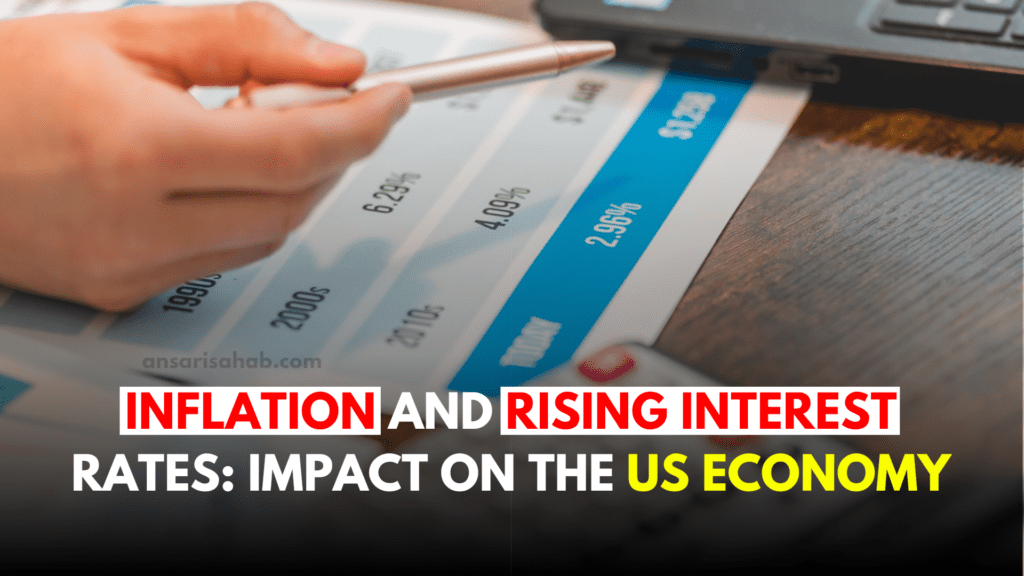GST Reforms: What’s Changing and Why It Matters for Markets
GST Reforms are best understood as both a cost and confidence story. On the cost side, rationalized slabs and targeted reductions (especially in mass-market categories) lower end-prices, help real incomes, and stimulate price-elastic demand. On the confidence side, a cleaner, digitally enabled GST 2.0 framework improves predictability for businesses, reduces friction in supply chains, and signals policy commitment. Together, that’s rocket fuel for a market that thrives on earnings visibility and sentiment.
Key transmission channels for investors:
- Price pass-through → Volume growth → Operating leverage: Lower taxes reduce sticker shock in small-ticket autos and consumer durables; higher throughput spreads fixed costs.
- Household cash-flow relief: Exemptions or lower effective tax on everyday spends and premiums free disposable income, supporting staples and discretionary baskets.
- Working-capital and compliance ease: Faster input credit cycles and clearer rules reduce the cash drag for MSMEs and suppliers, aiding margins and resilience.
- Macro signaling: Efficient taxation strengthens the reform narrative, a magnet for domestic and foreign flows.
The Bull Case, Quantified in Narratives (Not Hype)
A bull run is ultimately an earnings story. If GST Reforms improve demand breadth and margin quality, consensus EPS for index heavyweights can re-rate. Layer in the possibility of disinflation (via tax pass-through) and a more supportive RBI later in the cycle, and you get a credible path to higher index levels in 2025–26.
Four pillars that support a sustained uptrend:
- Consumption Recovery Broadens: Lower effective prices in autos, durables, and everyday goods revive volumes; staples stabilize, discretionary accelerates.
- Margin Cadence Improves: More volumes with disciplined pricing lift operating leverage; better tax credit flows reduce working-capital stress.
- Credit Cycles Strengthen: Retail loan growth (auto, consumer, housing-adjacent) picks up as sentiment and affordability improve.
- Policy Optionality Emerges: Softer inflation prints raise odds—though not certainty—of measured monetary easing, lowering discount rates at the margin.
Sector Playbook for 2025–26 (Who Wins First and Why)
Autos & Two-Wheelers: Elasticity at Work
For entry-level buyers, a few percentage points off the price can make the purchase viable. That’s why autos often respond first to tax relief. Expect two-wheelers and small cars to lead the charge, followed by select passenger vehicles. Suppliers with strong OEM relationships and lean working-capital cycles also benefit.
Investor angles:
- Prefer OEMs with (a) high small-car/two-wheeler mix, (b) robust dealer networks, (c) disciplined discounts.
- Watch order books and retail registrations, not just wholesale dispatches.
FMCG & Consumer Durables: Volume First, Premiumization Next
Lower effective tax on everyday products can stabilize volumes in staples and kick-start trade-up in discretionary categories (air coolers/conditioners, televisions, small appliances).
Investor angles:
- Look for companies balancing volume recovery with mix premiumization (value packs vs premium SKUs).
- Track rural sentiment and input cost trends (packaging, commodities) for margin confirmation.
Insurance (Life & Health): Affordability → Penetration
Any tax relief on premiums translates directly into lower policy cost, improving conversion and persistency. With under-penetration still high, even small affordability gains can move the needle.
Investor angles:
- Focus on insurers with strong bancassurance tie-ups and digitally enabled onboarding.
- Monitor monthly new business trends and protection mix for durable growth.
Banks & NBFCs: Second-Order Beneficiaries
Credit demand follows consumption. As retail spending rebounds, auto loans, consumer finance, and SME credit firm up. Asset quality benefits when cash flows stabilize.
Investor angles:
- Favor lenders with diversified retail books, stable cost of funds, and improving credit cost trends.
- NIMs may normalize; the real edge is growth + asset quality.
Building Materials & Real Estate Adjacent: The Slow Burn
If rate rationalization reduces costs in parts of the construction chain, the payoff is later but larger, driven by housing and infrastructure cycles.
Investor angles:
- Look for pricing discipline and utilization upticks; capacity adds should be timed prudently.
- Monitor government capex guidance and urban housing indicators.
Inflation, RBI, and Liquidity—The “Second Engine” of the Bull Case
GST Reforms can aid disinflation via lower effective prices, especially if competition drives full pass-through. As headline and core ease, the RBI gains latitude to shift from tight-neutral to incrementally supportive. Even without immediate rate cuts, a credible path to easier policy can:
- Compress equity risk premiums,
- Encourage duration in portfolios, and
- Sustain domestic flows into equities.
For investors, that’s a gentle tailwind: when discount rates stop rising and earnings keep compounding, multiples don’t need to expand wildly to power an index move—time and growth do the work.
Market Scenarios for 2025–26 (Base, Bull, and Guardrails)
Base Case: Broadening Advance
- Growth: Consumption improves, services stay resilient, manufacturing inches up.
- Earnings: Mid-teens EPS growth led by autos, consumer, financials; materials improve late-cycle.
- Valuation: Stable to slightly higher as visibility improves.
- Index Path: Gradual climb with periodic consolidations; pullbacks are bought.
Bull Case: Virtuous Loop
- Policy: GST pass-through cools inflation; RBI leans supportive.
- Flows: Steady domestic SIPs plus selective foreign inflows.
- Earnings: Positive surprises from volume + mix + operating leverage, especially in consumer-adjacent names.
- Index Path: Breakouts sustain; leadership broadens beyond a handful of mega-caps.
Guardrails (Risks to Watch)
- Pass-Through Dilution: If price cuts don’t fully reach consumers, demand response weakens.
- Fiscal Friction: Centre-state misalignment could slow implementation cadence.
- Global Shocks: Trade frictions or commodity spikes may muddy the disinflation path.
- Credit Slippage: Aggressive consumer lending without underwriting discipline can boomerang later.
The Investor’s Checklist (Tactical + Strategic)
- Build a Consumption Barbell:
- Core: Large-cap consumer staples with distribution moats.
- Beta: Two-wheelers/small-car OEMs, select durables with improving working-capital turns.
- Add Affordable Protection Plays:
- Life/health insurers with strong multi-channel distribution and improving protection mix.
- Own Quality Retail Credit:
- Private banks/NBFCs with measured growth, resilient liabilities, and clean asset quality.
- Use the “Margins Flywheel”:
- Prefer companies showing volume up + opex discipline + better mix—that’s a triple engine for EPS.
- Monitor Three High-Frequency Signals:
- Retail registrations (autos), monthly secondary sales (FMCG), credit growth + delinquency (lenders).
- Position for Late-Cycle Materials (Optional):
- If housing/infrastructure momentum improves, scale into building materials on dips.
- Stay Valuation-Aware:
- Add on consolidations, not euphoric spikes. Protect gains with position sizing and time stops.
Content Gap Analysis—How This Guide Outranks Generic Posts
- Investor-First Lens: We don’t stop at “GST slabs were tweaked.” We map exact transmission from tax to volumes, margins, EPS, and multiples.
- Actionable Sector Stack: Clear who-benefits-first hierarchy (autos/FMCG/insurance → lenders → materials), with concrete portfolio angles.
- Risk-Managed Scenarios: Base vs bull with real guardrails; not just cheerleading.
- Practical Checklist: A step-by-step allocation and monitoring plan, tuned for 2025–26.
Conclusion: Can GST Reforms Ignite the Next Bull Run?
Short answer: Yes—if execution meets expectations. GST Reforms can lift demand where it’s most responsive, improve business confidence, and—via disinflation—create room for a friendlier policy environment. That mix is tailor-made for an earnings-led market uptrend in 2025–26. The earliest winners are likely autos, FMCG/durables, and insurers, with banks/NBFCs riding the credit upcycle and materials joining late if housing and infra accelerate. Anchor your portfolio to quality, watch high-frequency indicators, and let compounding—and policy—do the heavy lifting.
FAQs
Not alone. They’re a powerful catalyst, but sustained gains need solid earnings delivery, supportive inflation trends, and steady domestic/foreign flows.
Start with two-wheelers/small-car OEMs, FMCG/durables, and life/health insurers. Layer in quality retail lenders and add materials later if housing momentum builds.
If tax pass-through cools inflation, the RBI gains room to lean supportive. Even a stable stance (no hikes) can help valuations if earnings keep growing.
Weak price pass-through, centre-state delays, external shocks to commodities/trade, and aggressive retail credit without underwriting discipline.
Use a core–satellite approach: core in quality large caps benefiting from consumption, satellites in high-beta beneficiaries (autos/insurers), and stagger entries during market consolidations.









